Media | Articles
Against All Oddities: Car storage in a derelict sock factory?
Is this my dumbest escapade yet? For what I think are justifiable reasons, I am now the leaseholder of a derelict North Carolina sock factory.
Fond as I am of warm feet, this strategy—and this may come as a shock to you—is more about car storage. To be able to park and/or shelter my current fleet of ten involves a sizable network of generous friends and family. The hulks are split between four locations: a cow lot on a farm, a sketchy Quonset hut next to a modular home, a carriage house in Charleston, and (increasingly these days) our yard at home in Statesville.
Wanting the keep the place looking more “urban farm” than “urban junkyard,” as well as ease the burden I place on others, I started keeping an eye out for expansion opportunities. (Thinning the herd did not cross my mind, nor will it, likely.)
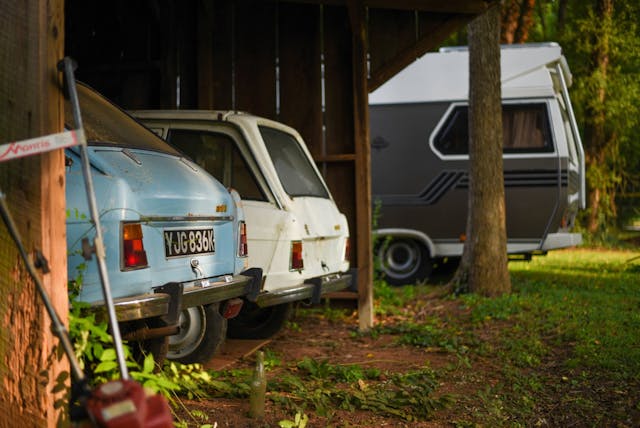
The region I live in, north of Charlotte, is at the epicenter of a decades-long crumbling textile and furniture industry. That has, sadly, led to an abundance of suffering mill properties. Usually, my wife and I fail to take note of these forlorn complexes while out on our rural explorations. Especially not for practical applications—the size and age of such structures, combined with their usually far-out locations and complexity of securing a lease or ownership, is daunting.
Then, one such building found me. While my wife and I were scoping out fall crops at the farm and garden supply store, a whole 300 yards from home, I beheld the big red barn-slash-drug-and-crime-hotspot I had walked by many times before in a different light. It was rough, sure, but could it be… an opportunity? Because what says “blight abatement” like a big shack brimming with crusty Soviet, French, and Italian project cars?
Marketplace
Buy and sell classics with confidence
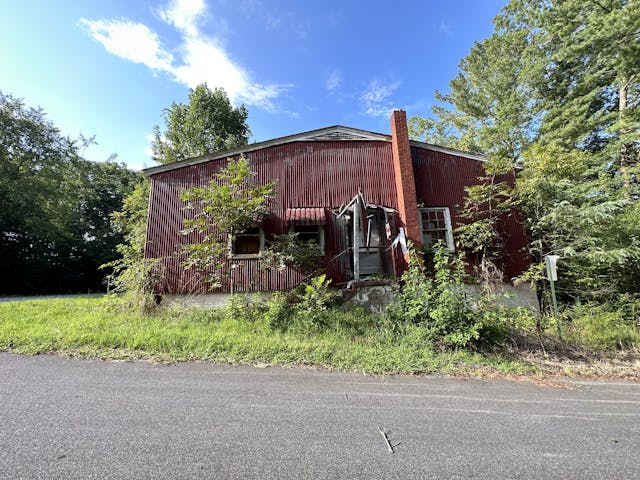
Guessing it may belong to the garden supply store owner, I shot my shot. “So, what’s the story with that red building,” I probed. “Why, you wanna buy it?” he joked.
A seventy-plus-year native of the region, the gentleman filled me in on the property’s history: The land was once a storage point for munitions in the Civil War. Then, the present structure was developed into a sock factory. Following a stint as a fertilizer plant, it became a storage building. Today it is empty, and a considerable personal injury and tax liability. I accepted his offer to at least take a look inside.
The sleeping bags, trash, and structural deficiencies I witnessed upon entry were sufficiently horrifying. I had seen what I needed to see. For some reason, I still took the weekend to think about it and came back to the garden store on Monday. “I’m not interested in selling right now, but make me a rental offer I can’t refuse,” the owner playfully invited.
My proposal: One year’s rent equivalent to the yearly property tax. I’d clean it out and secure it and beat back the jungle. Neither of us had any liability. With that, we shook on it.
“You’re insane,” my wife added. He nodded at her in agreement.
***
So, I’ve got a year to try things out. I’m up on my tetanus shots, and at worst, I figured, I’d die in a pile of collapsed wood and metal lose a grand while fixing up a neighborhood eyesore. Onward ho!
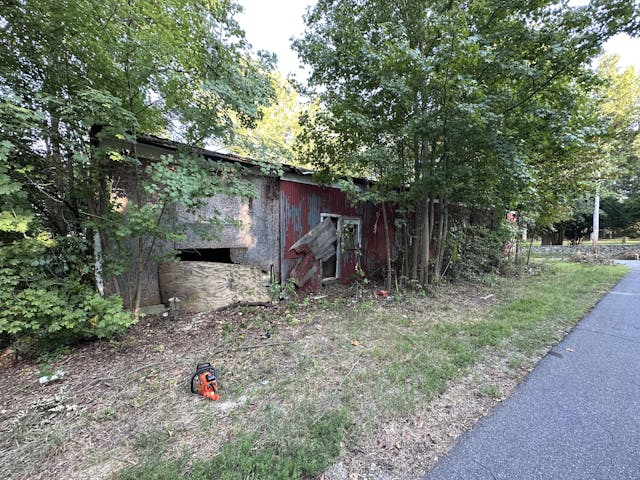
It took a full 24 hours of heavy breathing and self-reflection before I asked my neighbor Lee for help clearing the place out. The first major issue: remove the thick layer of trash on the floor. The second problem was more dramatic: the only external door was missing, and in its place overgrown trees. No point dealing with the latter issue while we still needed to haul out all that crap.
Not afraid of tasks that lead to bodily infections, I started off by getting an industrial dumpster delivered. Shoveling loads of used plant starter trays—thousands of them—into an enormous metal ben was oddly satisfying. Like a drawn-out, dystopian game of filthy Tetris. Of course, the fulfillment of pulling up urine-soaked carpet while trying not to cut your foot on shattered crack pipes is… less cathartic.
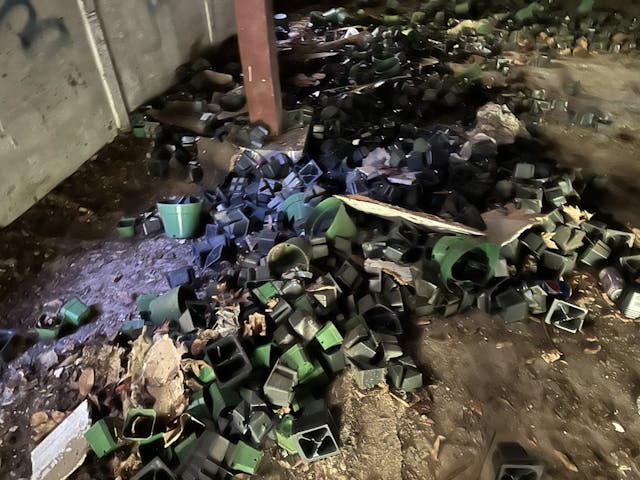
I escaped that endeavor with merely a sinus infection, which counts as a win. Next job? Creating a large, sliding barn door on the end of the building, so as to take advantage of the generous 50′ x 20′ loading dock slab. With the integrity of the existing wall in major question, Lee and I started by clearing the brush and creating a barely-adequate roof support out of 2 x 4s and a cheap blue aluminum floor jack from a familiar big-box store. After three evenings, two design revisions, one demolition, and somewhat careful reconstruction, we had a sturdy header off of which we could hang a door. Given the factory’s location a stone’s throw from our houses, Lee and I could pop over to the factory at a moment’s notice. It really allowed for quick progress.
Earlier in this article, I alluded to the, ah, security situation in this structure. I was relatively confident that cleanup and the appearance of regular use would deter most unwelcome parties. (The latest born-on date of any of the beer cans in there was pre-COVID, and the séance candles all were wet and disorganized. I wasn’t too worried.) Still, I wanted eyes and ears, though with no electricity that was going to be a hassle.
Power was a problem for another day. My best bet seemed to be an experiment, in which I’d place in the factory a kind of sacrificial anode that might tempt scrappers and graffiti artists. Luckily, I had just the car.
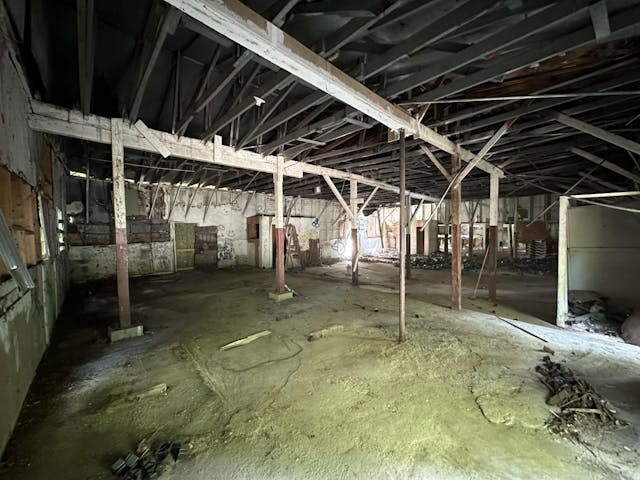
Regular readers will recall my new work colleague Matt F., who I’ve been immersing in my grungy brand of North Carolina car culture in our off time. His next training course: steering my spare Citroen Ami through downtown Statesville while being towed by my good Citroen Ami. The distance of this trip: one half-mile.
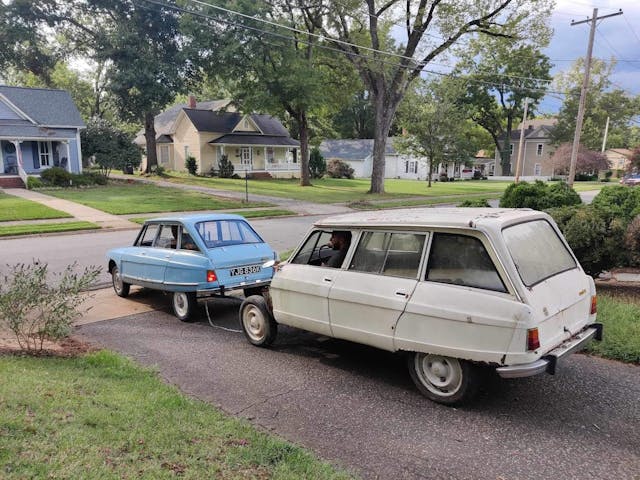
Naturally, there was an open house going on two doors down. Real estate agents always come prepared with rebuttals against struggling schools and lackluster landscaping, but I considered this a true test of their creativity. As we exited the driveway in the path of a young couple and their speechless real estate agent, I remembered a very similar scenario playing out once before. It was in Charleston, and the cars in tow were beige utes—Aussie Ford Falcon and a VW Caddy. Anyway! At least now this couple knew what they were dealing with, and the agent has some time to think of a convincing explanation before the next showing.
We made it down the road without issue, and shove up the removable ramps the Ami snuggled its way into the back corner of the factory.
***
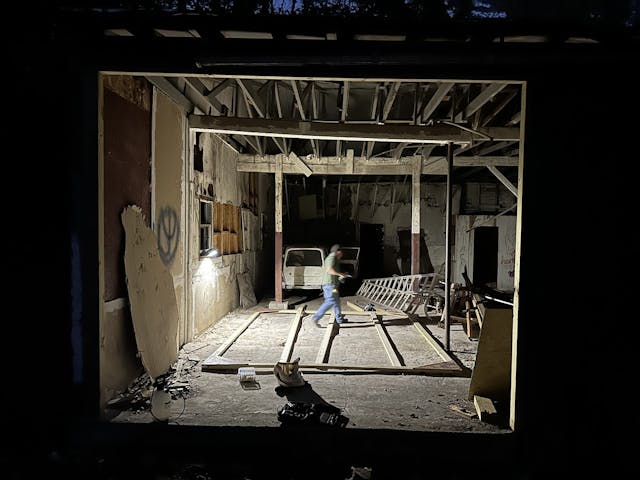
Two weeks passed. None of my bait tools or vehicles were stolen or even vandalized! I judged it safe to proceed with door construction. We created the sliding 10′ x 14′ monolith from salvaged tin and yet more 2 x 4s, and we hung it using every textbook Egyptian rolling and levering technique we could muster. With no light, no equipment, and thankfully no hernias, the two of us jostled the 400-pound slab onto its sliding rail. It looked like trash, and also, just right.
I don’t expect that I’ll ever be able to buy this property outright, at least not anytime soon. So I’ve set a kind of soft limit to what I’m willing to do. So far it cost me a decent number of hours and $800 for this cleanup and upfit. It might take a little more for the place to meet its main goal: a safe place inside which I can store cars. Maybe that doesn’t live up to the land’s munitions-turned-sock-factory legacy, but I’d like to think my oddball car collection will class up the joint.
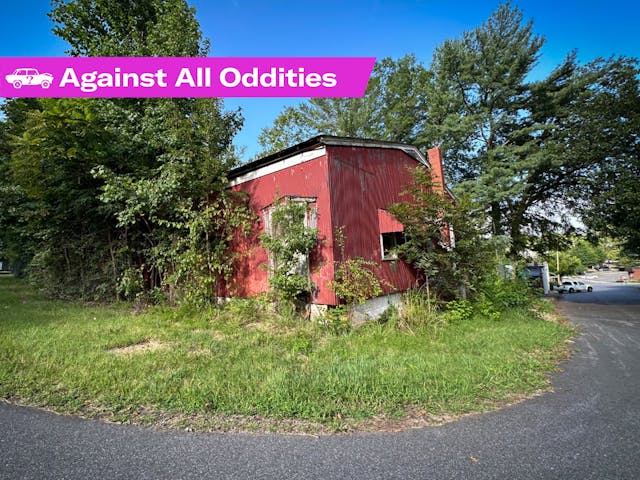









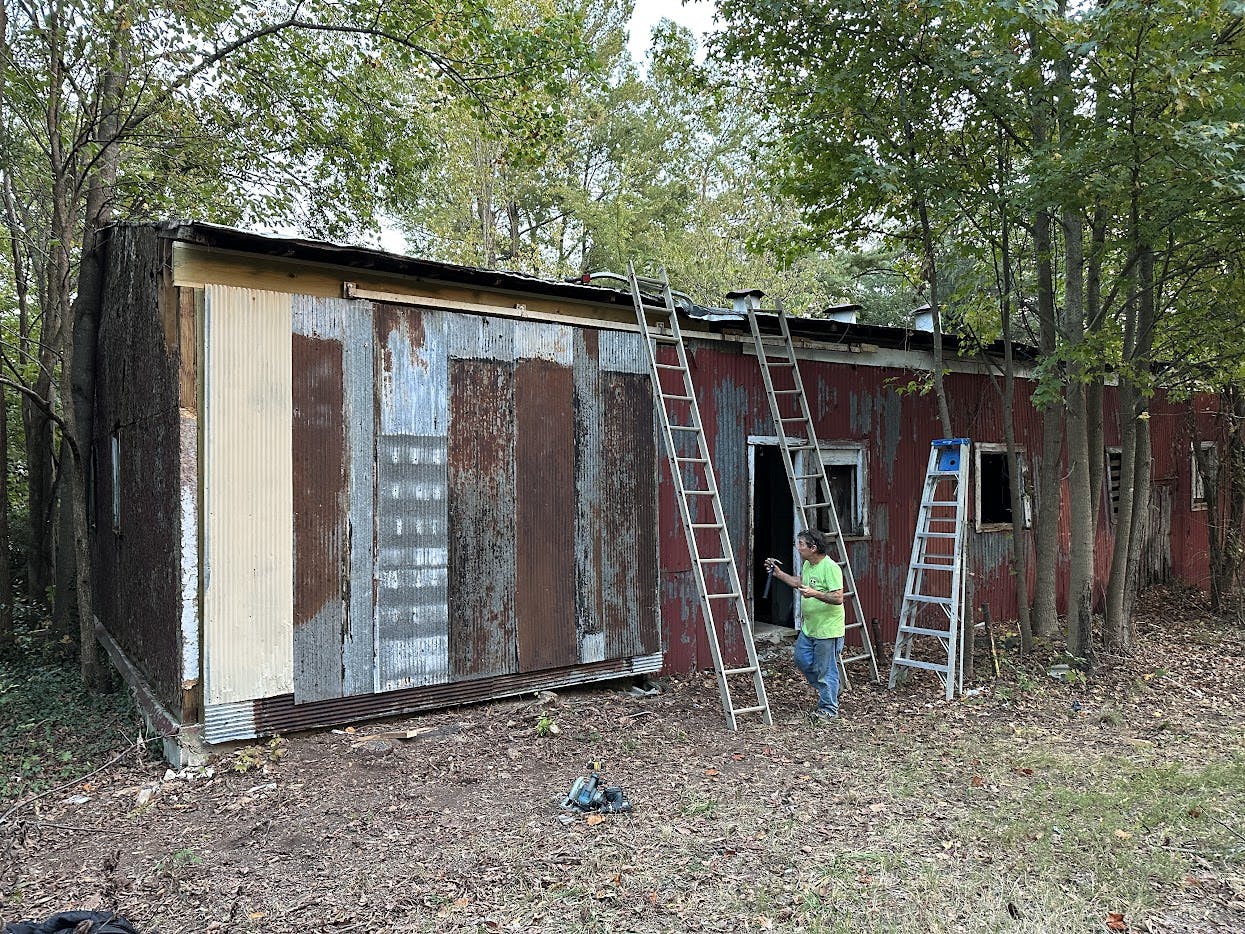
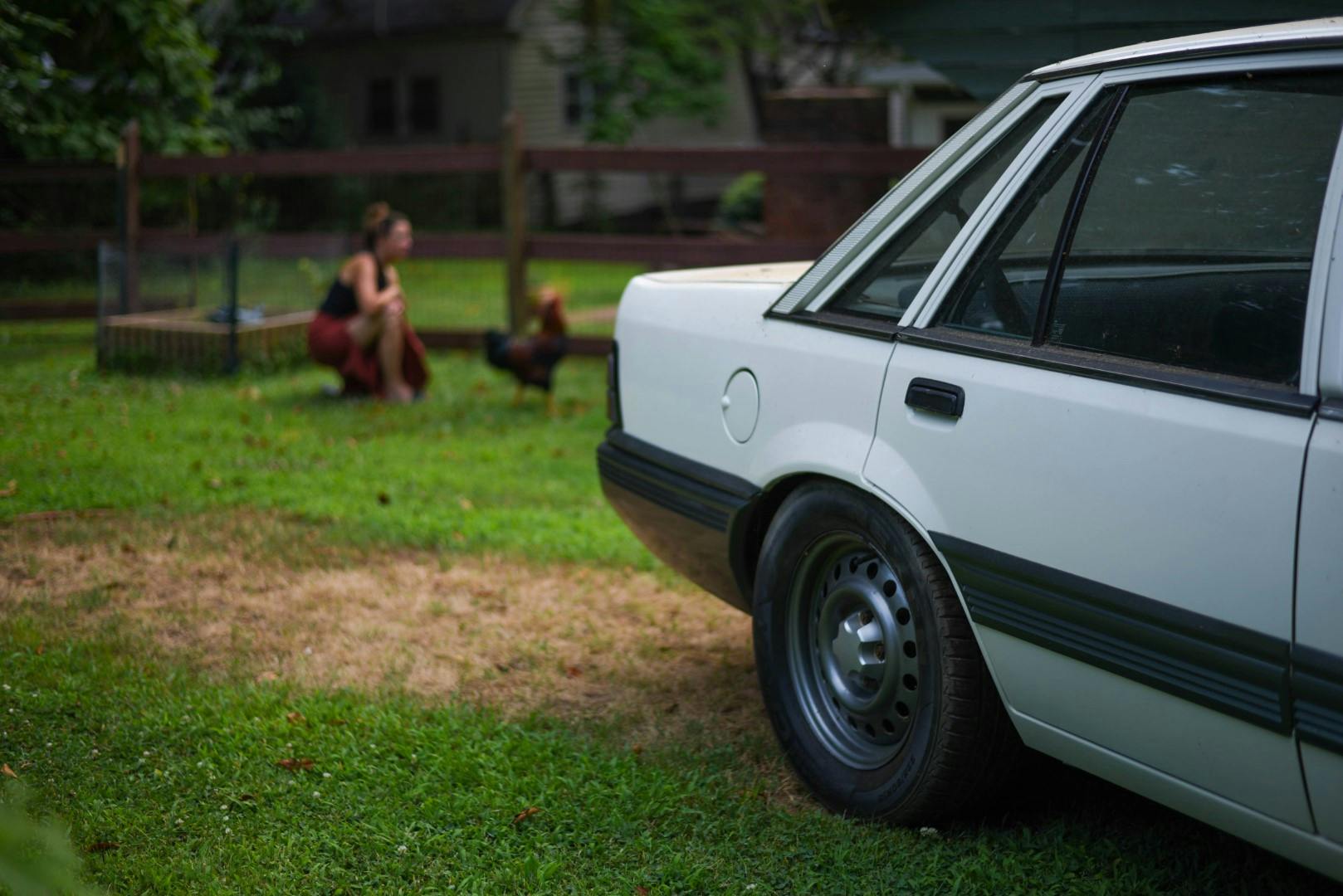

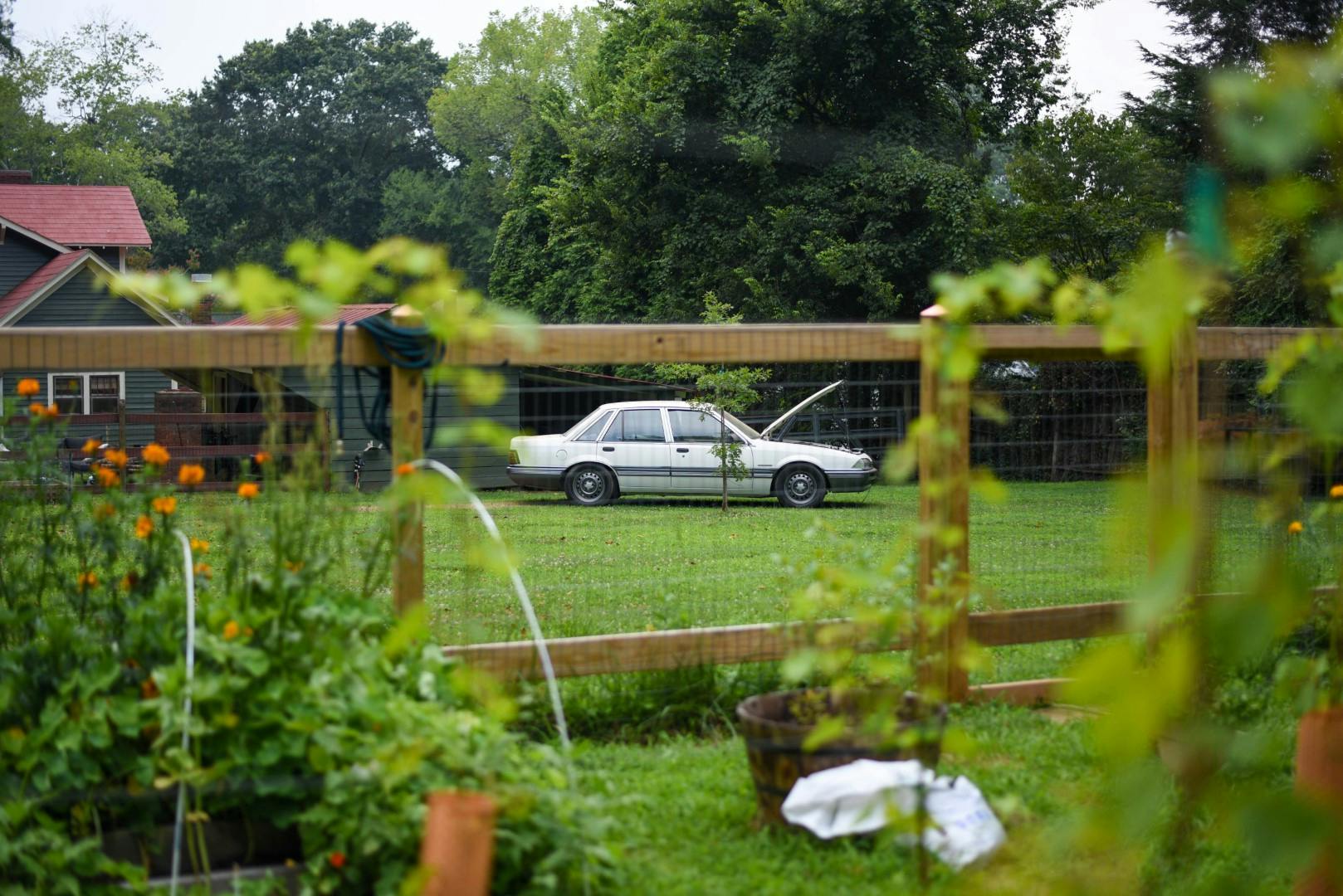
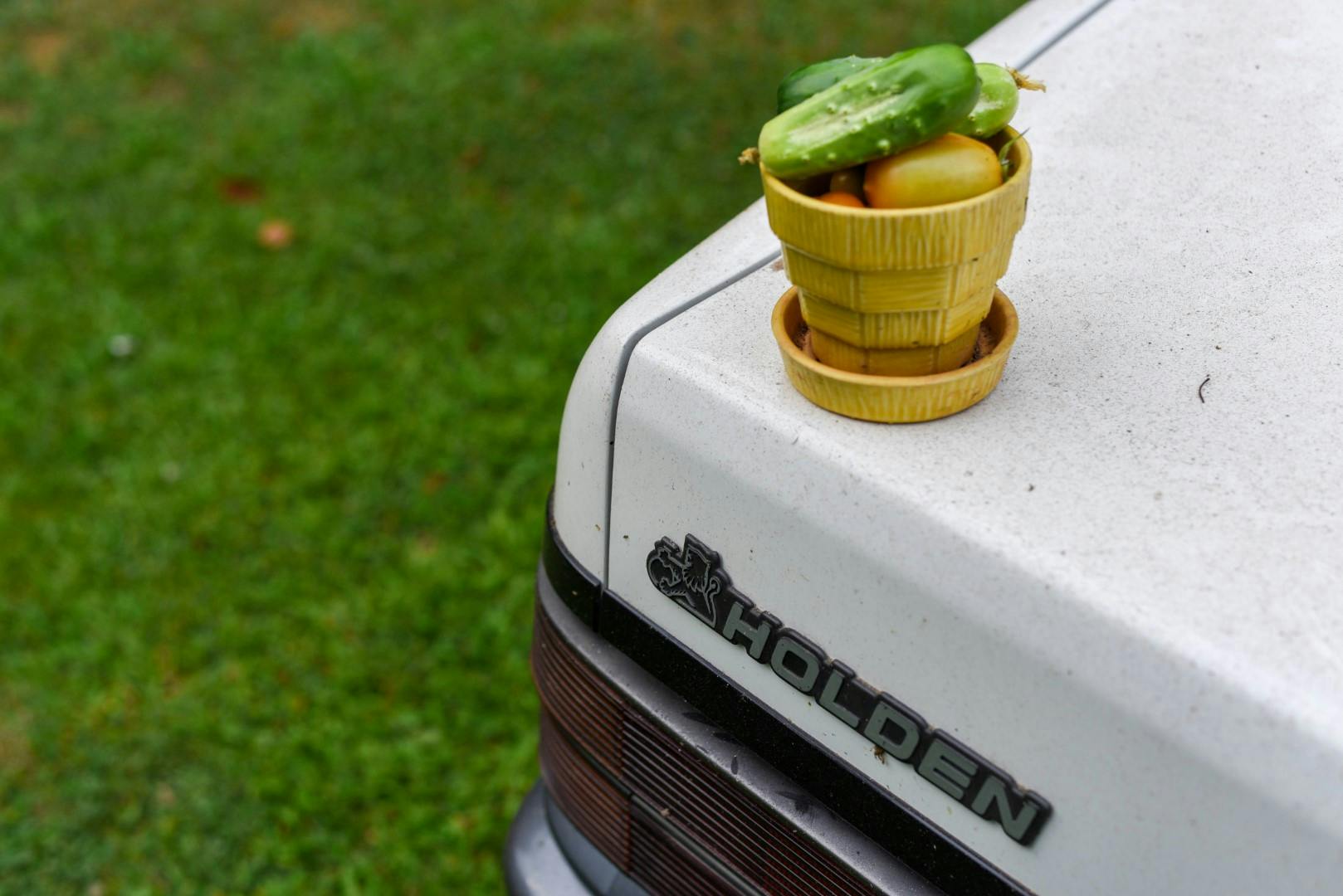
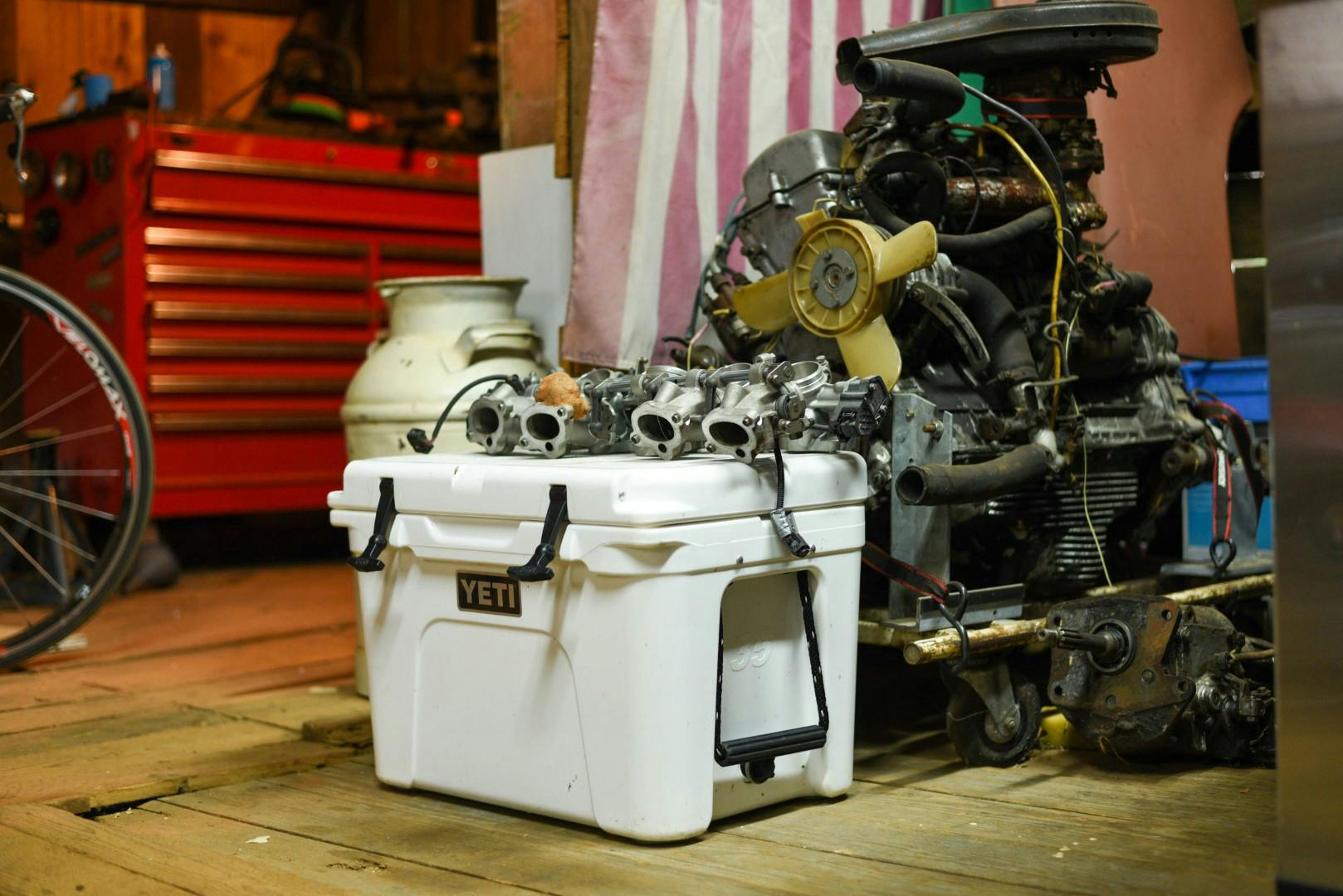
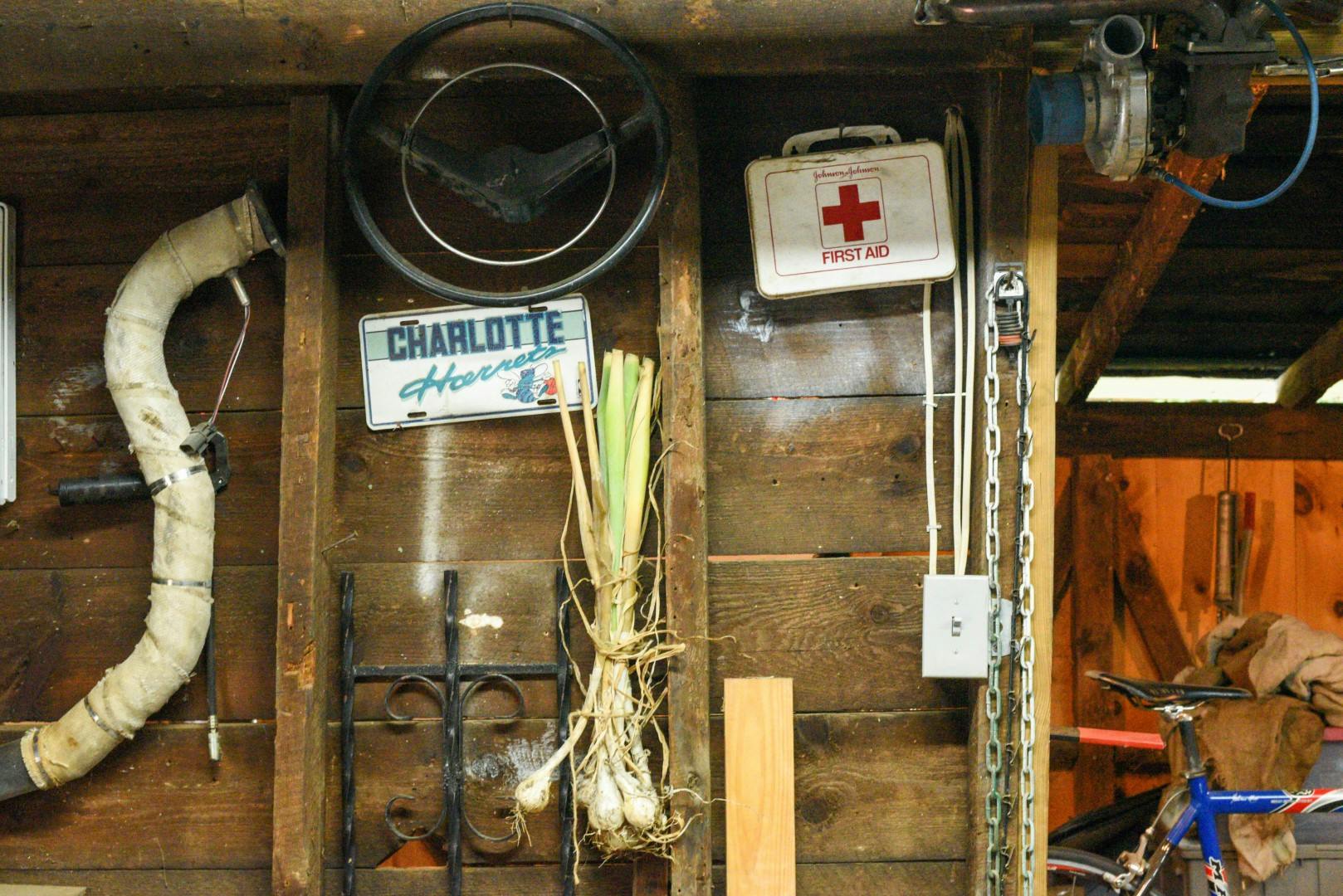
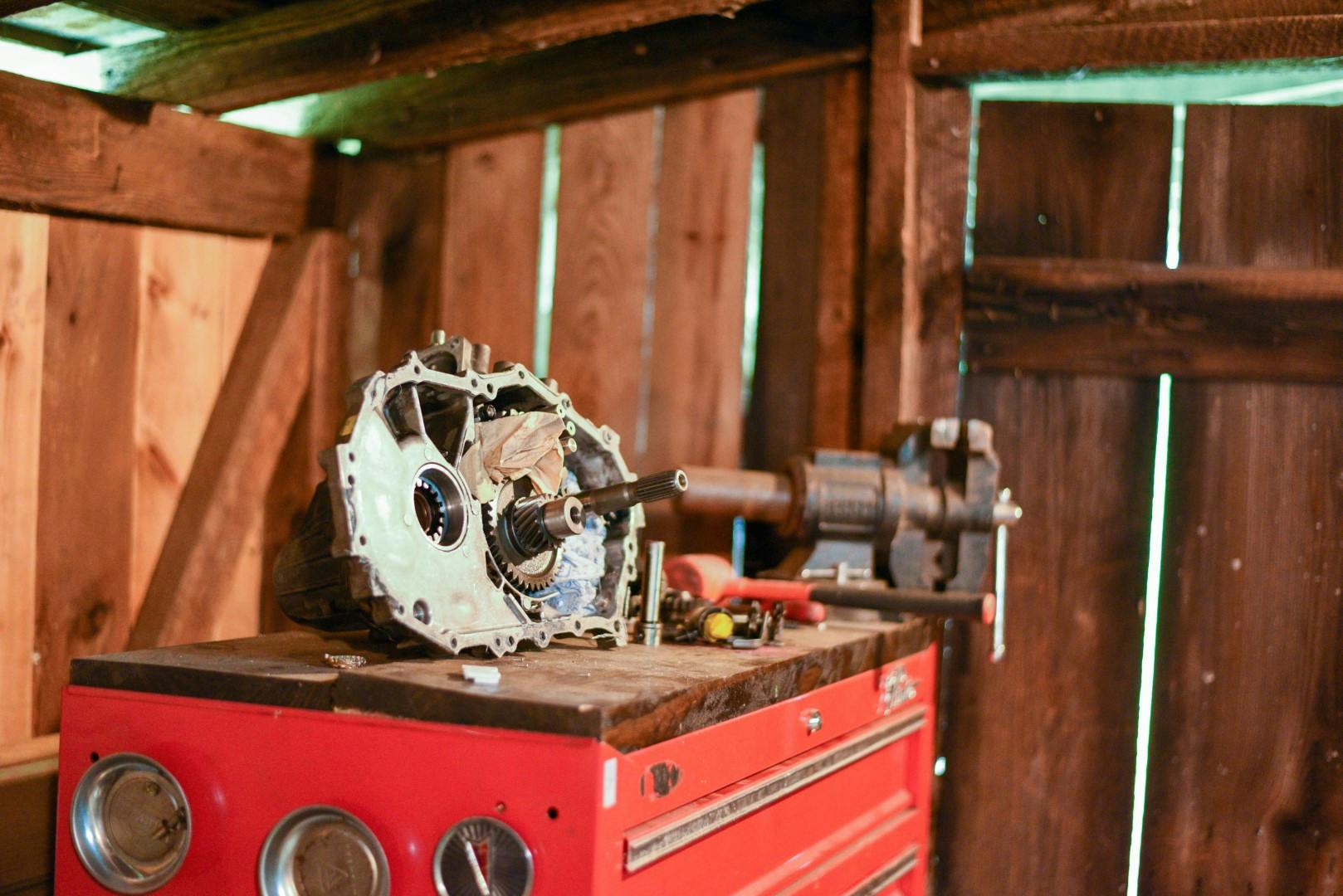
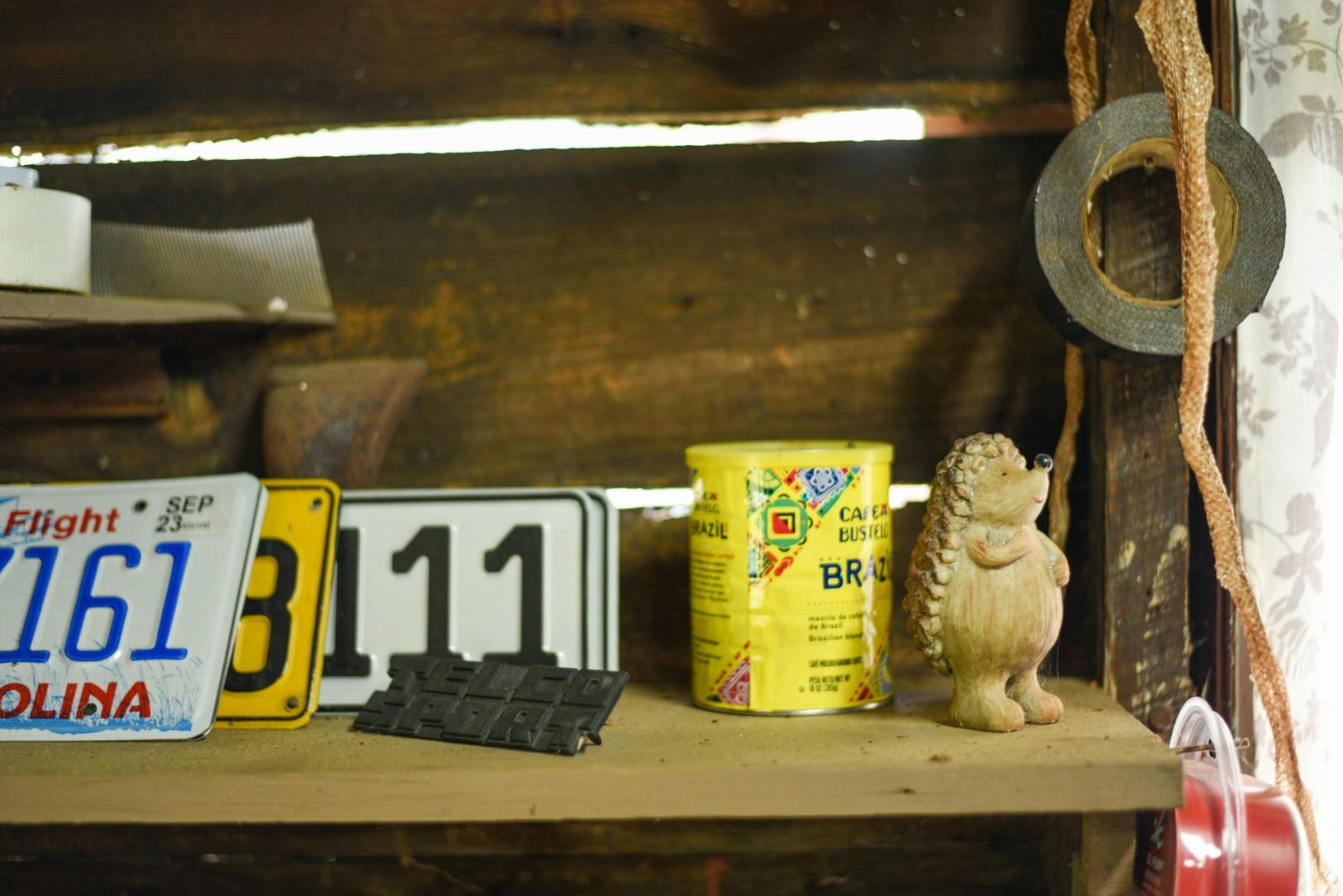
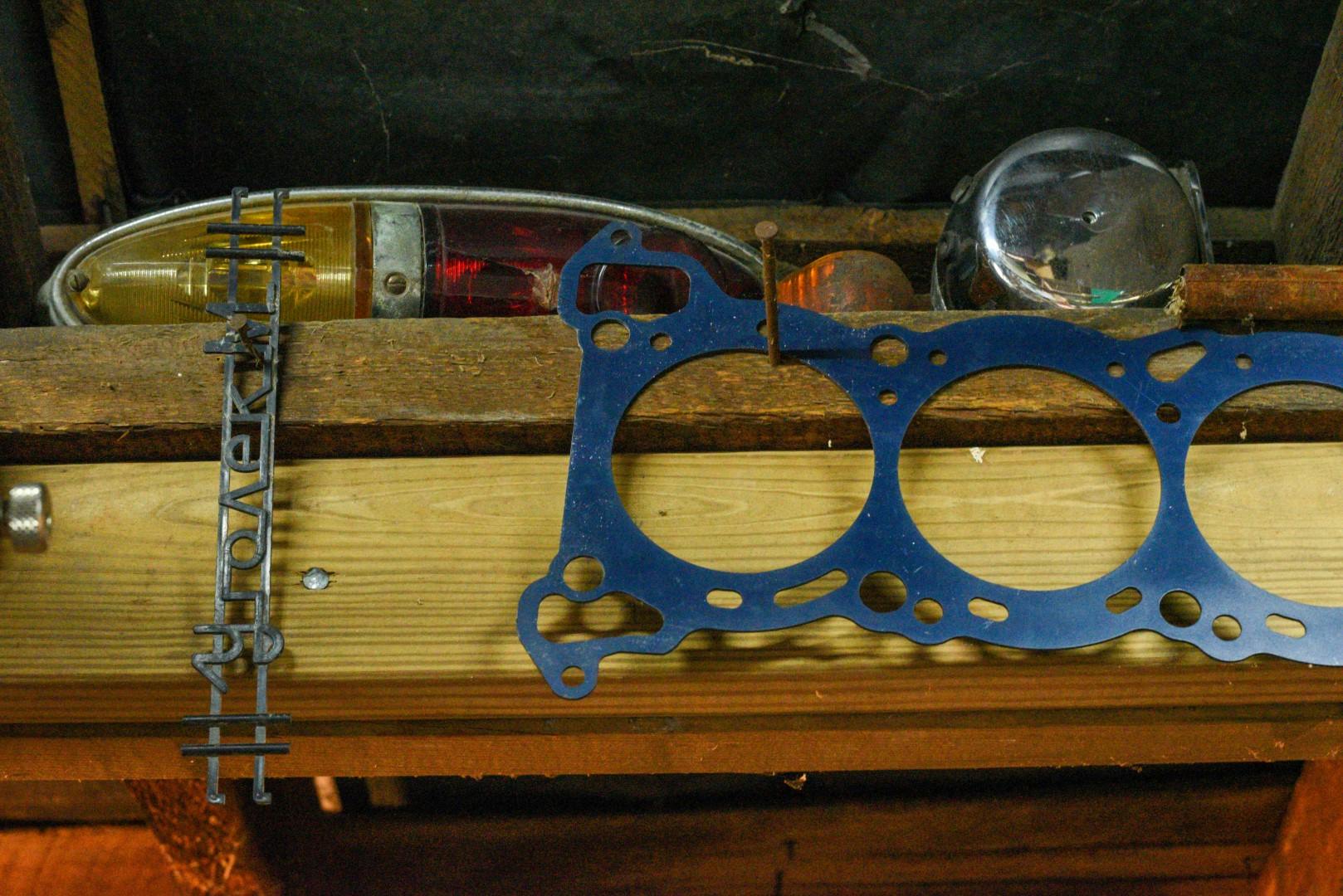
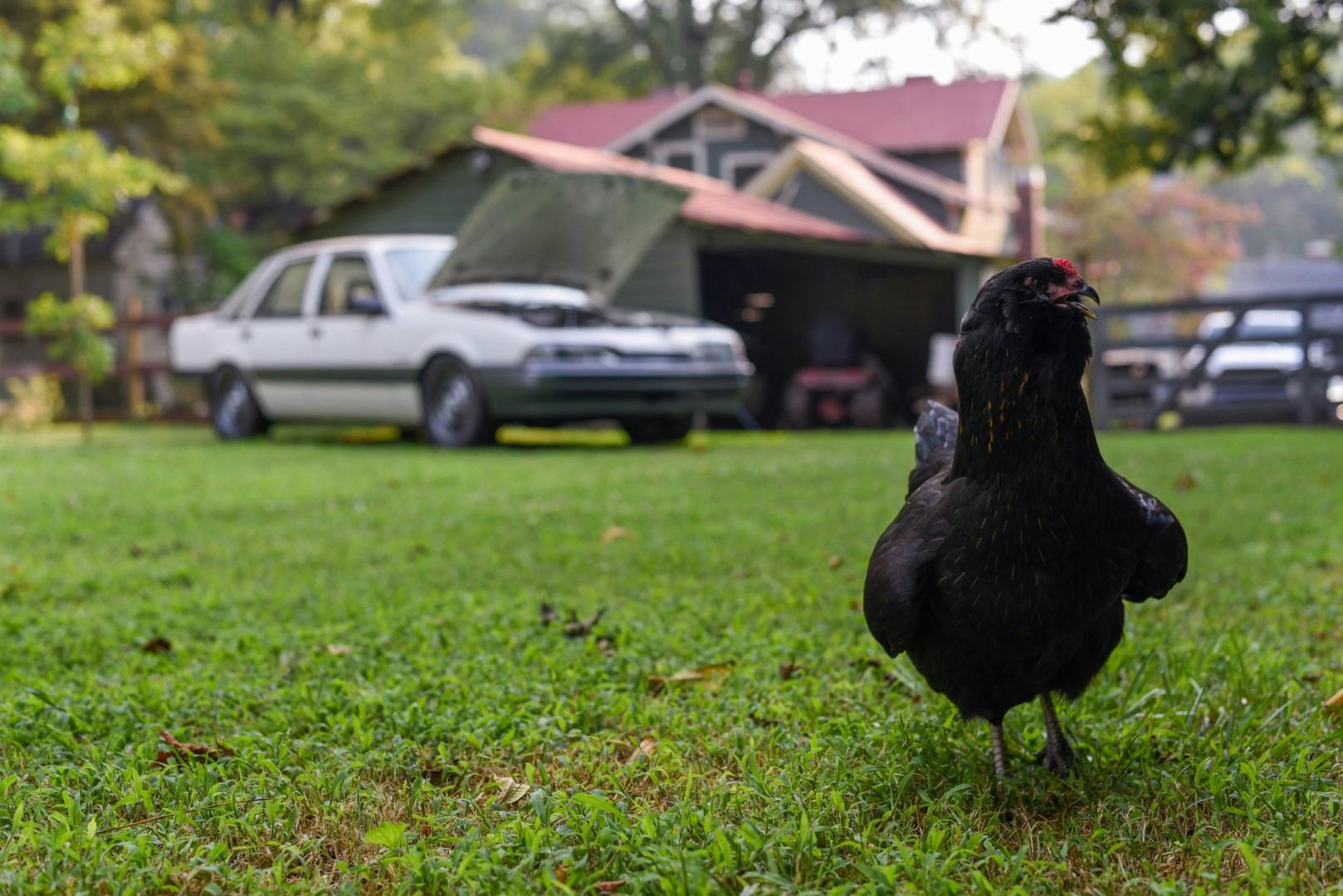
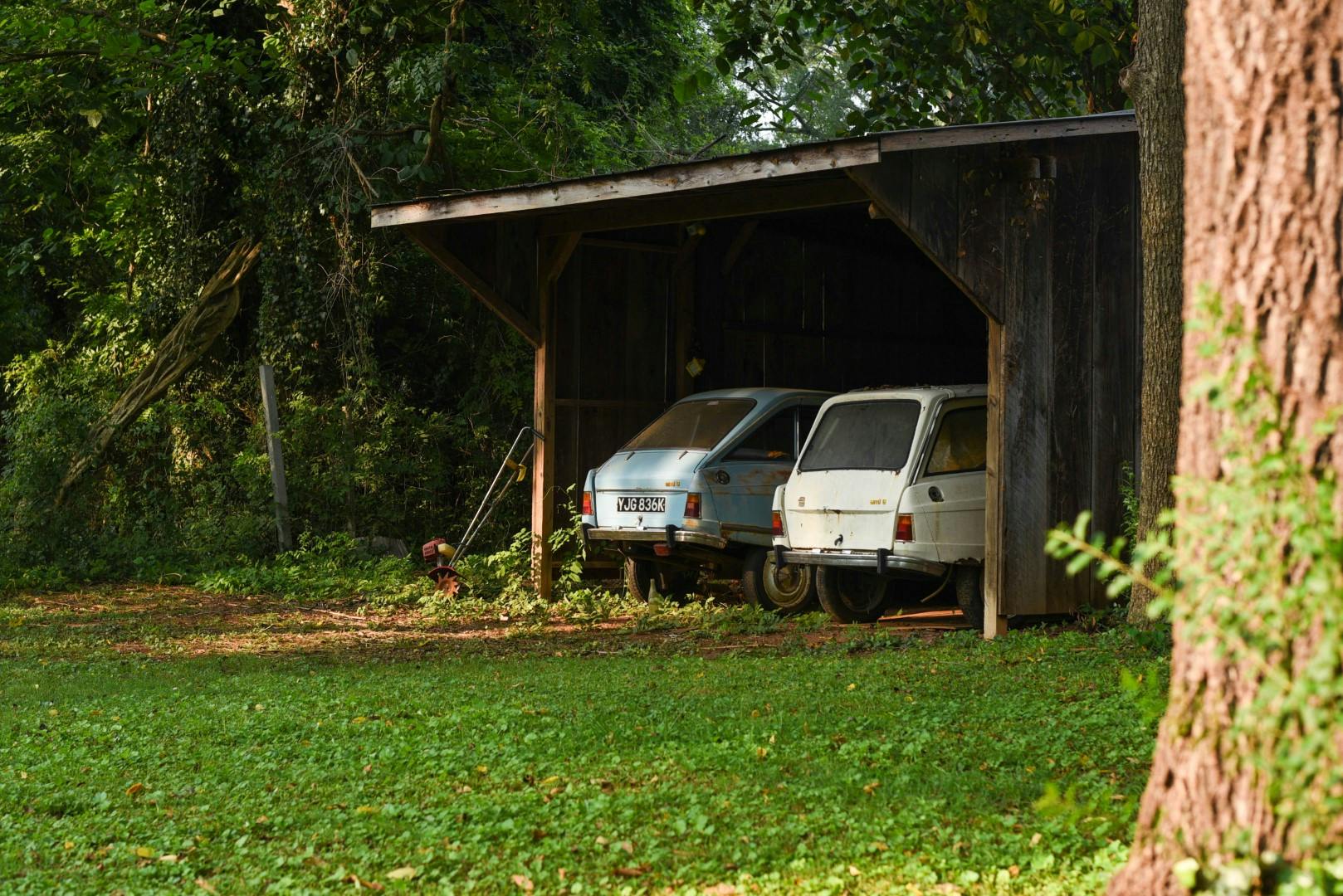
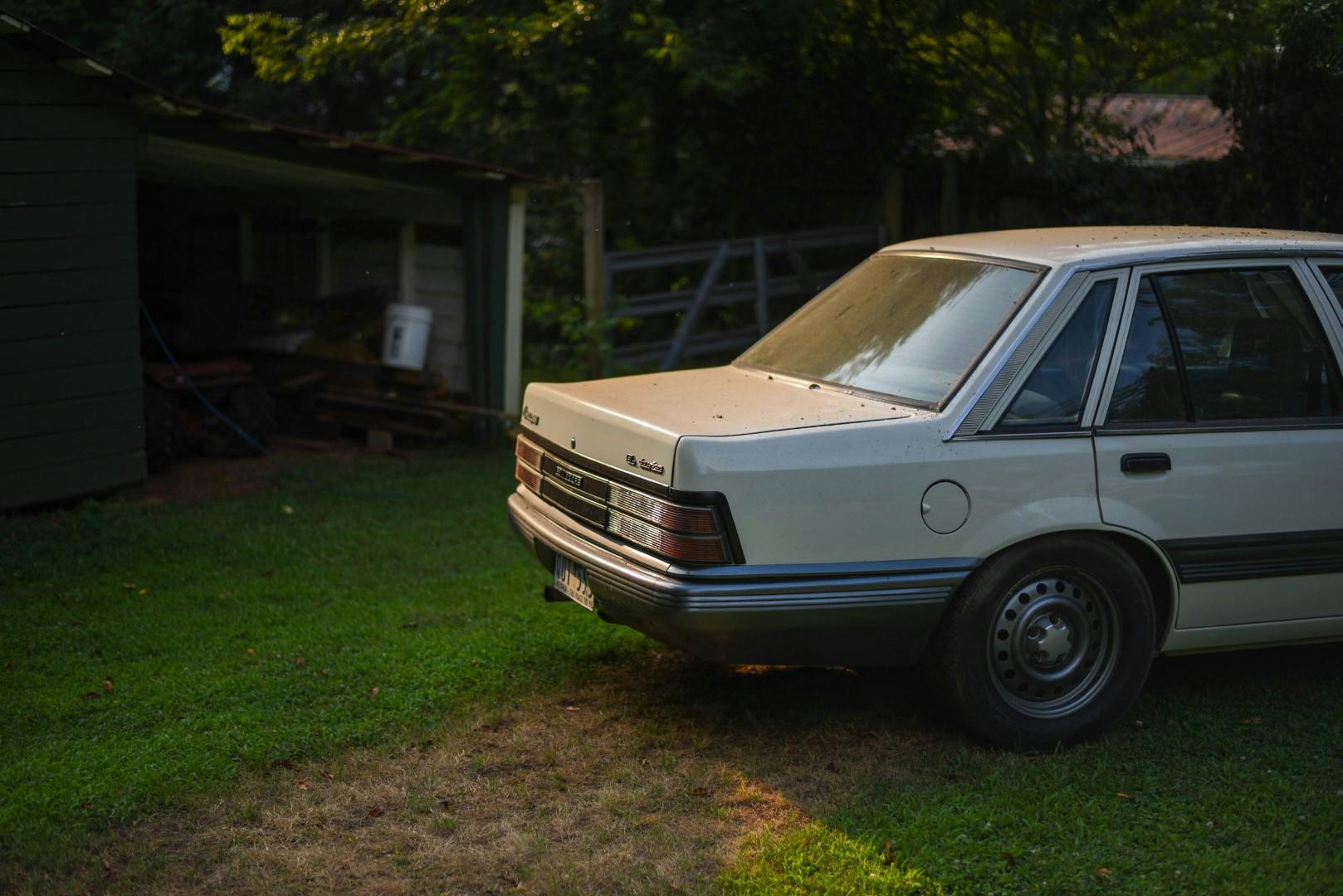
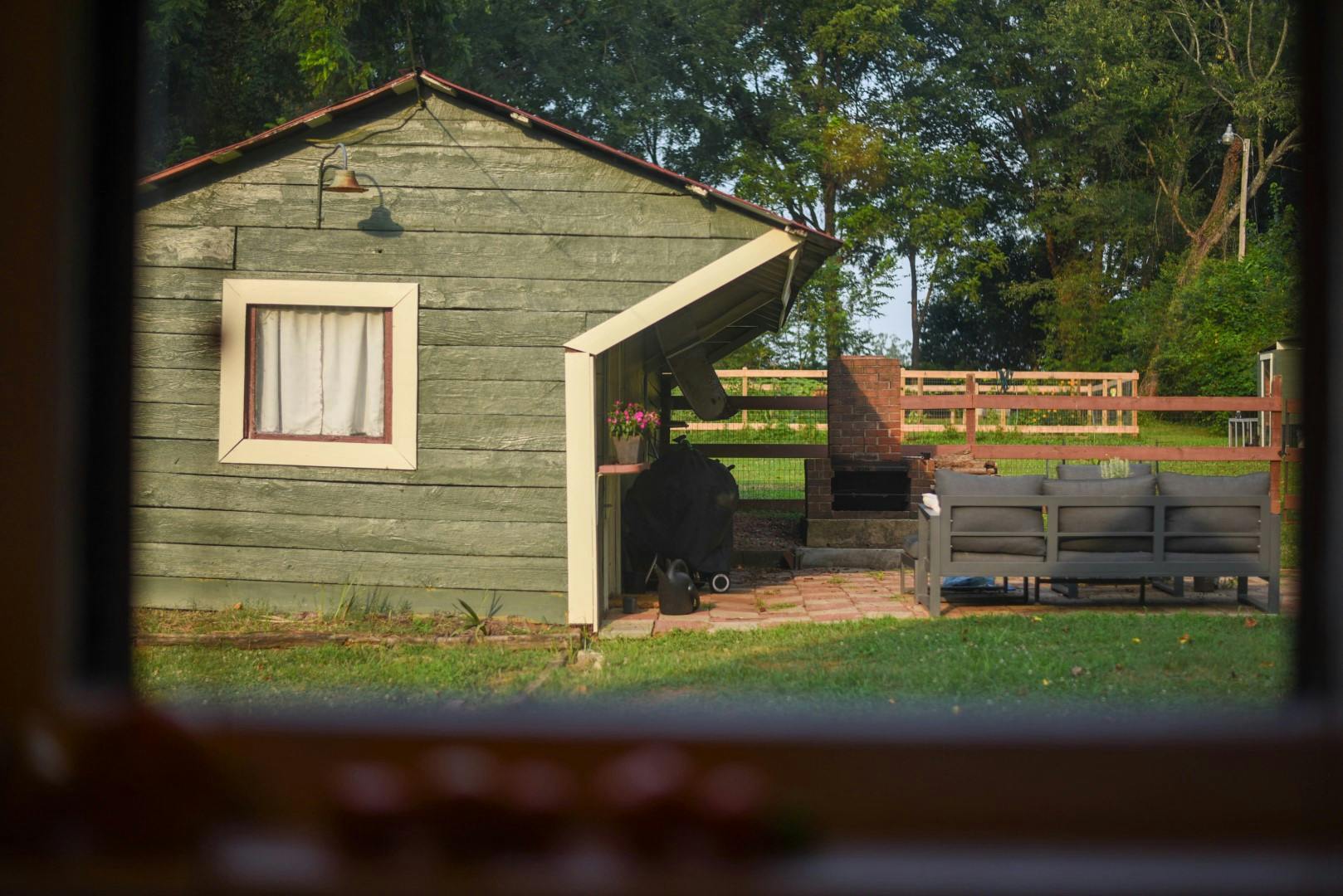

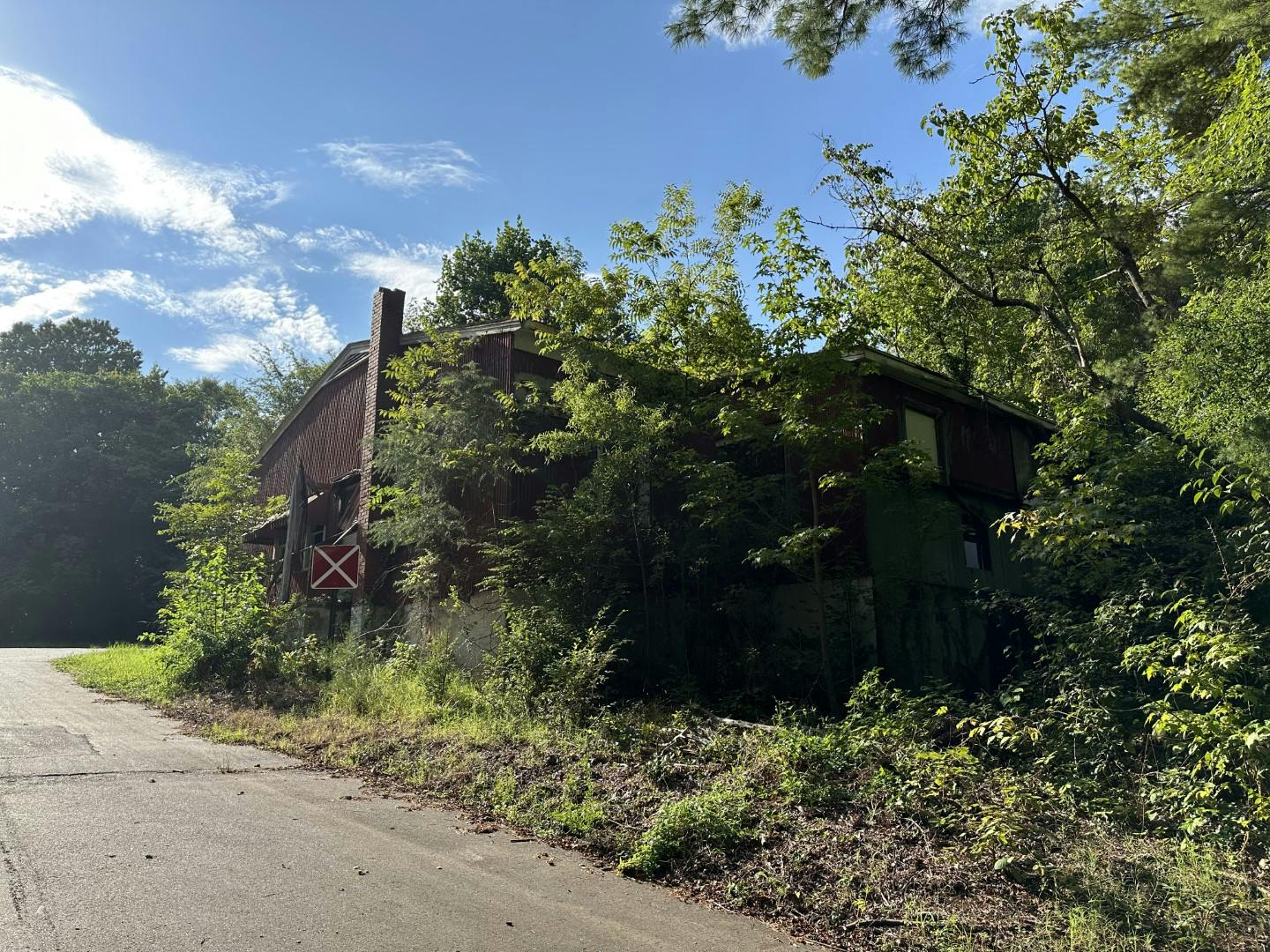
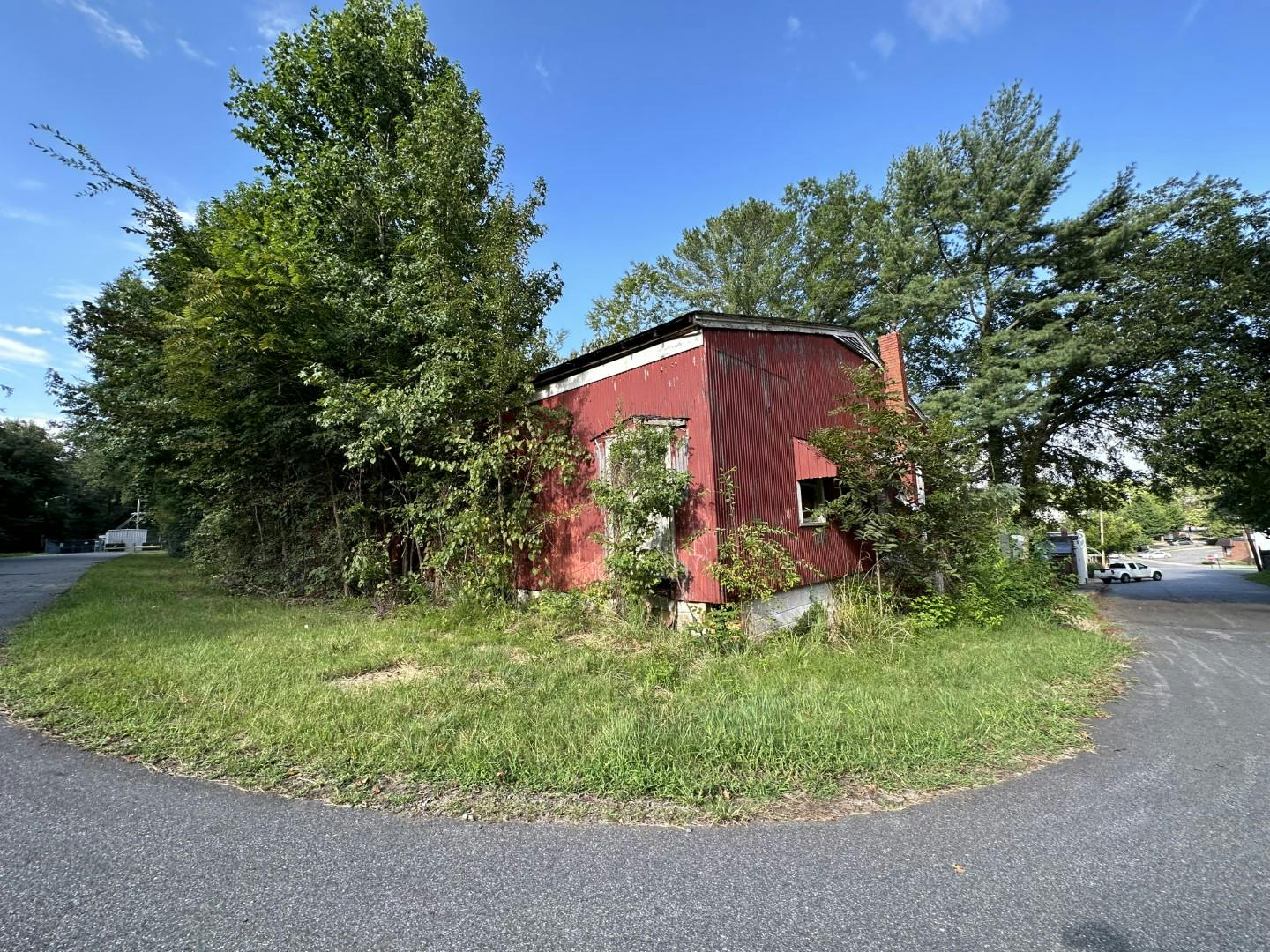
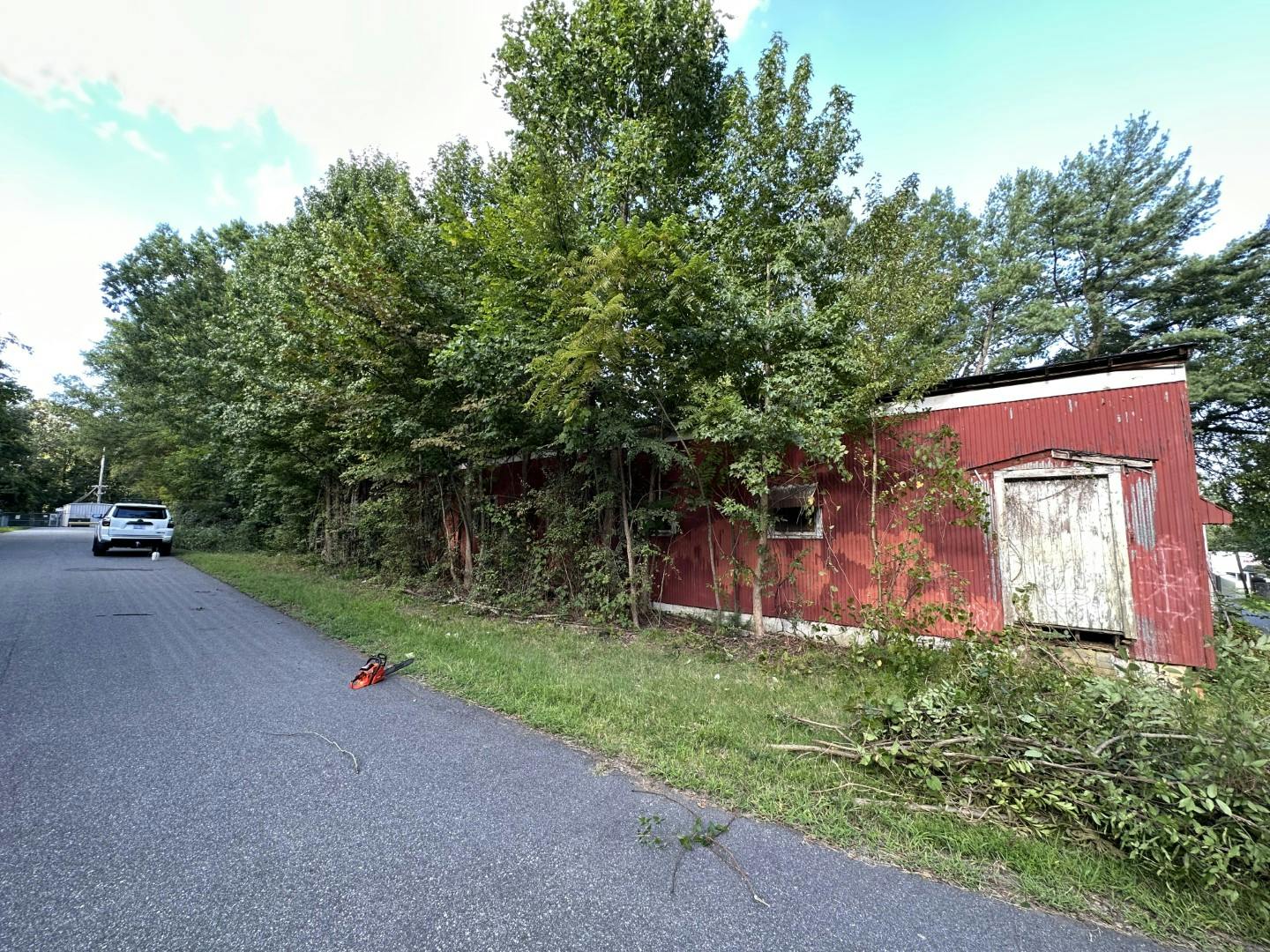

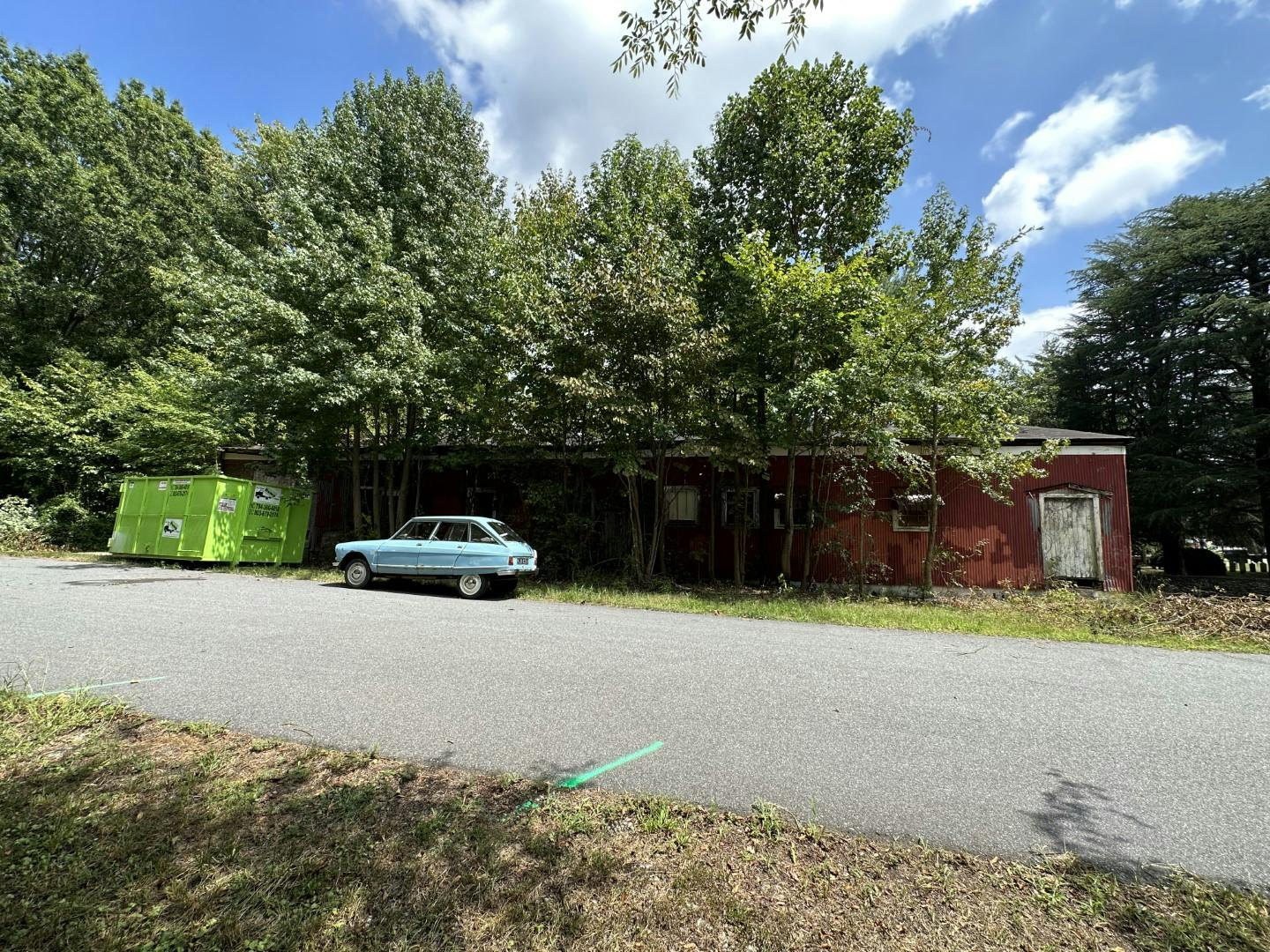
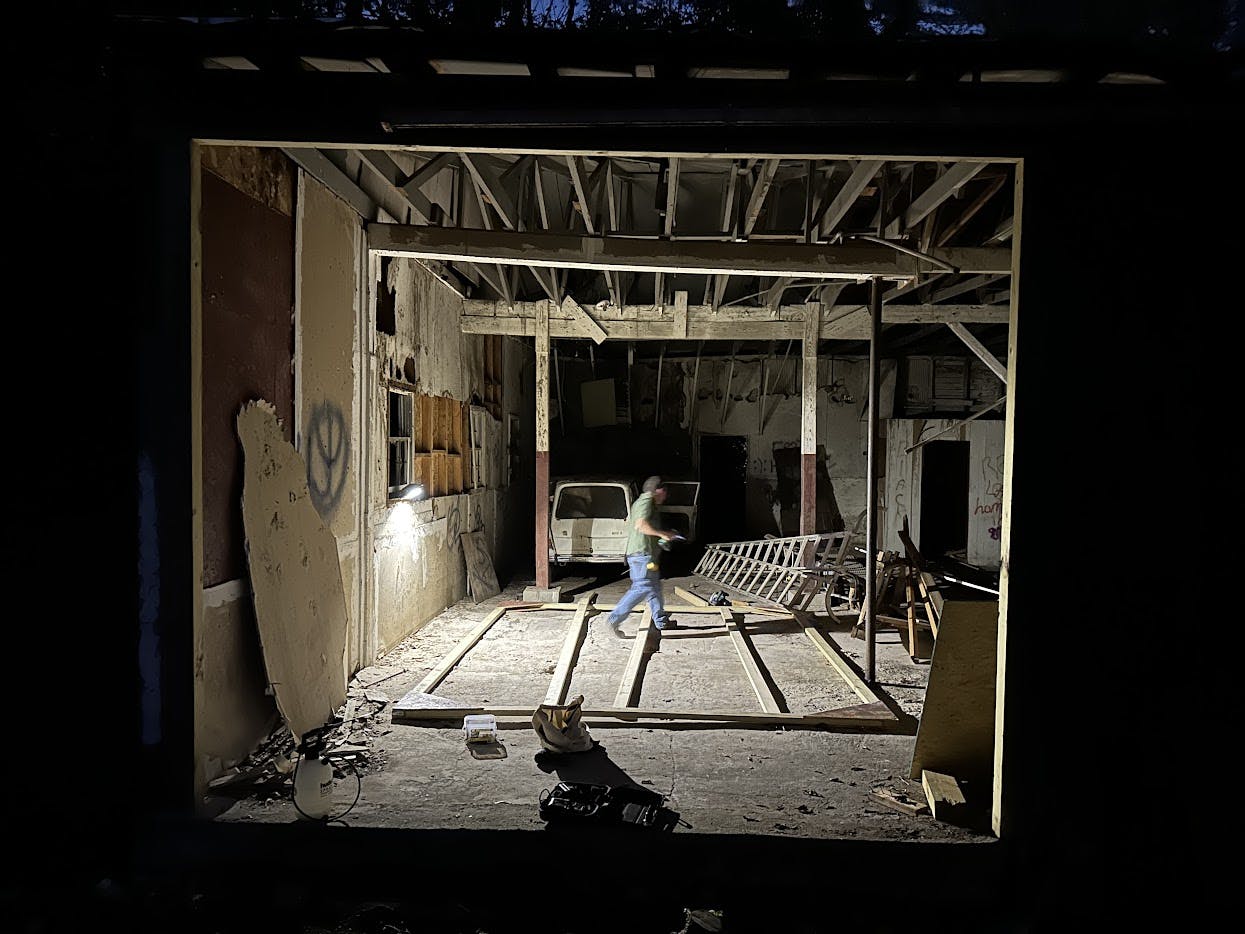
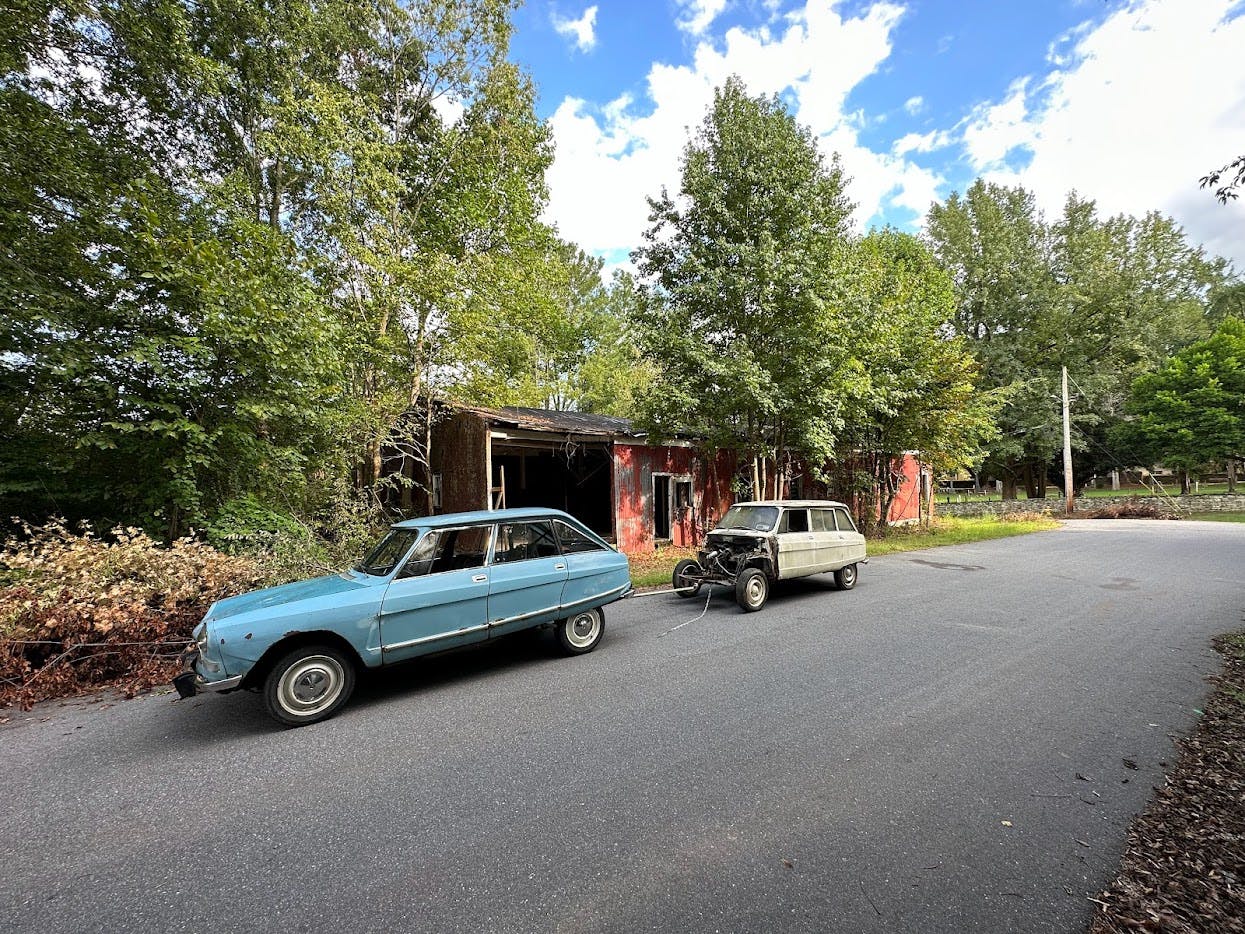





























Matt , good story. I also purchased a building for the purposed of storing cars and a workshop. I bought a building erected in the late 1800’s very stout with 2′ thick walls made of rock. I must love my cars because my building is 120 miles from my current home, the drive home is the worst since I’m exhausted after working all day repairing and updating my building. Good luck with your renovations and hopefully purchase in the future.
I started my business at the old Judson Mill where Shoeless Joe Jackson worked as a child laborer. The mill had several old out buildings just like yours. Lots of square footage real cheap…. No power and lots of roof leaks but it did the job nonetheless. Thanks for bringing back those memories.
Reminds me of a wooden shack in a rural area I inspected as a possible garage for my recently restored Fox body Mustang. It looked like a good sneeze would have taken it out.
On a much smaller scale, but the same idea. I needed some extra land to expand our business, so I asked the guy living next door if he would move if I could find him a better house. He agreed and I went to work. I found a great HUD house for cheap and he was delighted. Helped him move, leveled his house and then rented his 3rd garage stall for $20.00 per month for one of my Corvettes. Win-win-win……
The ladder with the missing rung in picture 31 makes a nice touch.